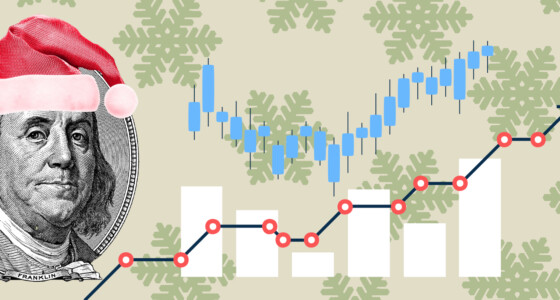

If you’ve ever ventured into the world of financial markets, you might have come across the term “knock-in barrier options”. But what exactly are these intriguing financial instruments, and how can they benefit you as a trader? In this friendly and explanatory article, we’ll explore the fascinating world of knock-in options, their mechanics, and their advantages and give you real-world examples. So, let’s embark on this journey to discover the potential these unique option contracts hold!
What is a Knock-In Option?
Before we dive into the depths of knock-in options, let’s get a clear picture of what they are. In simple terms, knock-in options are conditional financial instruments that exist when certain predefined conditions are met. These conditions are typically the price levels of a particular stock before expiration.
So, a knock-in option is a type of barrier option that remains inactive until a specified price level is attained before it expires; at this point, it becomes a regular option. In this case, the conditions are often called “barrier levels” or “activation conditions.” Once the barrier is breached, the option becomes active, triggering its payoff structure. That is, the option becomes active at or above the price level that you have set.
The Distinction: Knock-In vs. Knock-Out Options
While exploring knock-in options, you might also encounter their counterpart, the knock-out options. So, what is a knock-in option, and how is it different from a knock-out option?
The key difference lies in the activation process. With knock-in options, the instrument becomes active when the barrier is hit. In contrast, knock-out options are rendered null and void once the barrier is breached. This means that knock-out options cease to exist if specific conditions are met, whereas knock-in options come to life under similar circumstances.
The Mechanics Behind Knock-In Options
To grasp knock-in options better, it’s crucial to understand their mechanics. These options can be structured in various ways, including European and American styles.
The key difference lies in their activation timing. European knock-in options become active only at the expiration date. This gives you a fixed timeframe to assess market conditions before the option is triggered. In contrast, American knock-in options can be activated at any point until expiration. It allows you greater flexibility in taking advantage of favorable price movements.
Another fascinating aspect of knock-in options is the presence of double knock-in options and reverse knock-in options.
- Double knock-in options
They require not one but two barrier levels to be breached before becoming active. Once both knock-in barrier options are met, the option is triggered. This offers traders the potential to benefit from dual market conditions. Double knock-in options are favored by those seeking to capitalize on significant price movements or specific market scenarios, adding an extra layer of complexity and strategic flexibility to their investment approach.
- Reverse knock-in options
They act like a protective shield. They remain dormant until extreme price fluctuations occur. These options act as insurance and offer a hedge against adverse market movements. When market conditions reach a specified extreme, the reverse knock-in option becomes active, safeguarding existing investments and providing peace of mind in volatile environments.

Real-World Knock-In and Knock-Out Option Examples
Let’s examine some real-world examples of knock-in and knock-out options to bring the concept to life.
Imagine you’re an avid investor anticipating a significant price breakout in company IJK’s stock. To seize this opportunity while managing risk, you decide to employ a knock-in option. You set the barrier level just above the stock’s current trading price. The knock-in option becomes active as the market moves favorably, breaching the barrier. Thanks to this strategic move, you participate in the price surge, maximizing potential gains and leveraging market expectations to your advantage. So, a knock-in option is not a put option because the owner earns money when the security goes up.
On the other hand, suppose you’re an investor interested in safeguarding your stock portfolio from potential downturns. Let’s say you own shares of Company IJK, and you’re concerned about a sudden market crash. You decide to purchase a knock-out option with a predetermined barrier level below the current stock price. This gives you downside protection. If the stock price drops to or below the barrier, the option becomes null, thus, limiting your losses and providing a sense of security during volatile market conditions.
Strategic Considerations and Risk Management
When considering knock-in options, it’s essential to assess market conditions carefully. Take a look at the trend expectations and potential price movements.
A knock-in option payoff diagram is a good way to evaluate the outcome of a knock-in option. It is a graphical representation of the potential outcomes of an options strategy. It shows the profit or loss of the strategy at different underlying asset prices. A payoff diagram can be an invaluable tool in visualizing the potential outcomes and rewards at different price levels.
Integrating Knock-In Options In Your Portfolio
As we conclude this journey into the world of knock-in options, you are now ready to include knock-in options in your portfolio. However, it’s essential to emphasize that integrating these unique instruments into your portfolio requires thorough research, analysis, and a well-thought-out strategy. Always work with reputable financial institutions and brokers to ensure a seamless and secure trading experience.
Knock-in options offer a distinct and flexible approach to navigating the complexities of financial markets. Their conditional nature and strategic applications provide investors and traders with opportunities to unlock hidden potential and diversify their investment strategies effectively.
Remember, the key to successful knock-in option trading lies in understanding the mechanics, evaluating the risks, and aligning them with your investment objectives. So, leap and explore the fascinating world of knock-in options today!









